Art has been divisive since people started making it. Even the great masters like Michelangelo and Caravaggio had their fair share of bad press. Some artists also thrive on shocking their audiences, and see shock value as a surefire way to burn themselves into the public’s memory. Regardless of whether people agree or disagree about the controversies, all of these art pieces have cemented themselves into art history on scandal alone.
The idea of the artist shocking the public with a piece of work that’s both troubling and genius isn’t a new one. Debates continue to rage today over what should be accepted as “art” and what should be considered obscene, gross, or even dangerous. Typically, anything pertaining to sex, religion, or politics is treading on dangerous ground. Sometimes, though, the pieces are controversial for just being, well, kind of icky.
The Last Judgment, by Michelangelo
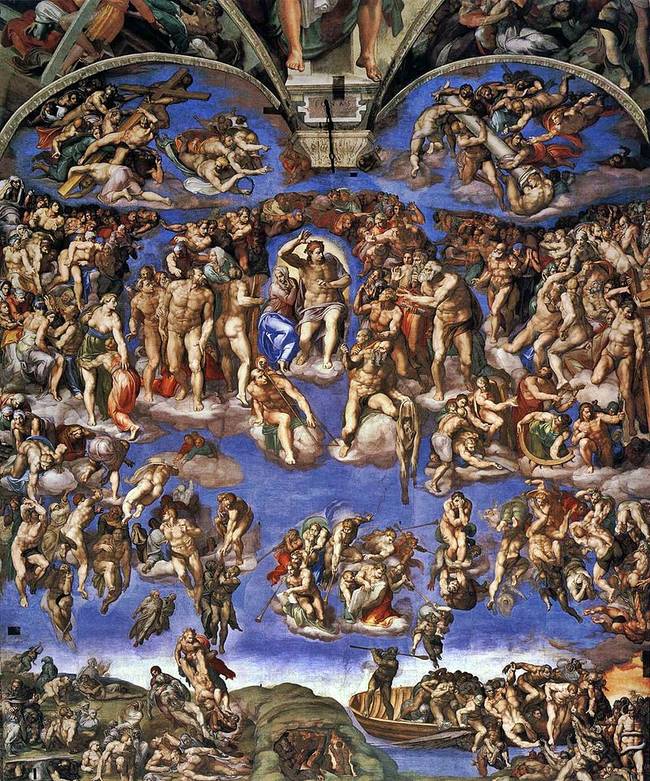 share
share
When this painting was created for the Sistine Chapel, some people balked at the idea of so many nude figures in a church (particularly the Pope’s Master of Ceremonies, Biagio de Cesena). To retaliate, Michelangelo put Cesena into the painting, placing him in hell, with donkey ears and a snake biting his genitalia. Even the Pope himself thought it was funny. The moral of the story? Don’t antagonize someone who can immortalize you.
Shoot, by Chris Burden
 share
share
In this performance piece, artist Chris Burden had a friend (whom he must have trusted to have good aim) shoot him in the left arm with a .22 rifle. Burden’s so-called “danger pieces” involved putting himself in physical danger, and also included being nailed to a car and starving himself for more than twenty days.
The Death of the Virgin, by Caravaggio
 share
share
This painting caused a stir because of the way the death of the Virgin Mary was presented. Instead of rising to heaven, Caravaggio decided to paint her as very dead. The model was rumored to be a known prostitute (and possibly a mistress of Caravaggio) who had died shortly before, meaning the figure seen here was actually painted from a dead body. The sprawled position and swollen feet are seen as evidence for this. Caravaggio was no stranger to controversy, though, and his life was characterized by romances with men and women, violence, and murder.
Self, by Marc Quinn
 share
share
This piece, one of several, is a sculpture made out of 4.5 frozen liters of the artist’s own blood. The blood is taken from his body over a period of 5 months. Quinn makes one of these about once every 5 years, and they’re kept frozen in a special refrigeration unit.
The Origin of the World, by Gustave Courbet
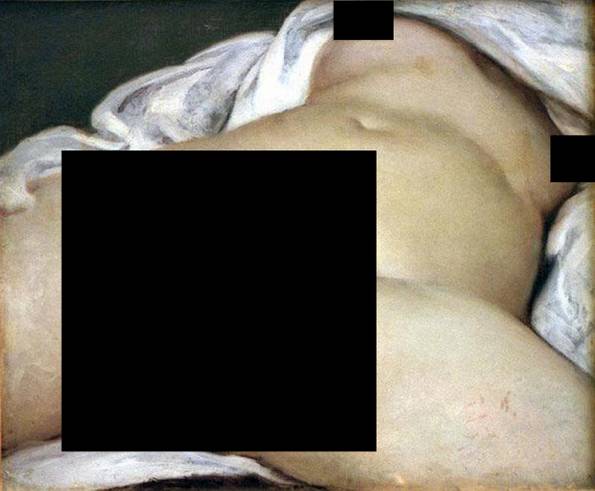 share
share
Yep, we censored this, too, because you’re probably at work. If you’re not, you can see the original version
here, but be warned that it’s a graphic depiction of female genitalia. The painting caused scandal in the 19th century and continues to do so today. (Facebook censored it in 2011.) For his part, Courbet painted this as a rebellion against the rules of painting nudes, which said that they must be idealized, and that nudes could only be painted in a mythological context. The painting’s title is a play on this.
The Holy Virgin Mary, by Chris Ofili
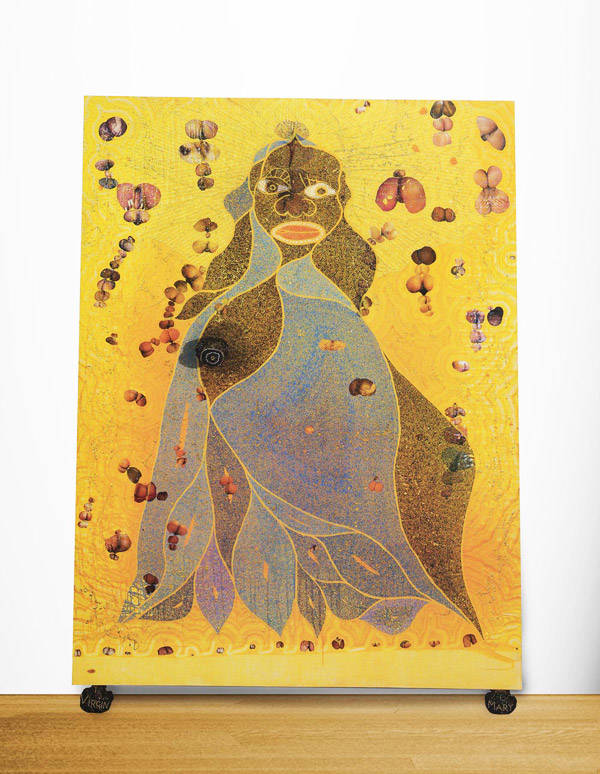 share
share
New York City mayor Rudy Giuliani took a particular offense to this painting, which shows a Black Madonna surrounded by what appear to be butterflies. They’re not butterflies, though; they’re images cut from pornographic magazines. Oh, and the painting also includes elephant dung. It sparked serious controversy when it showed at the Brooklyn Museum, with Giuliani threatening to evict the museum over the exhibit, and a disgruntled visitor smearing white paint all over it.
Portrait of Madame X, by John Singer Sargent
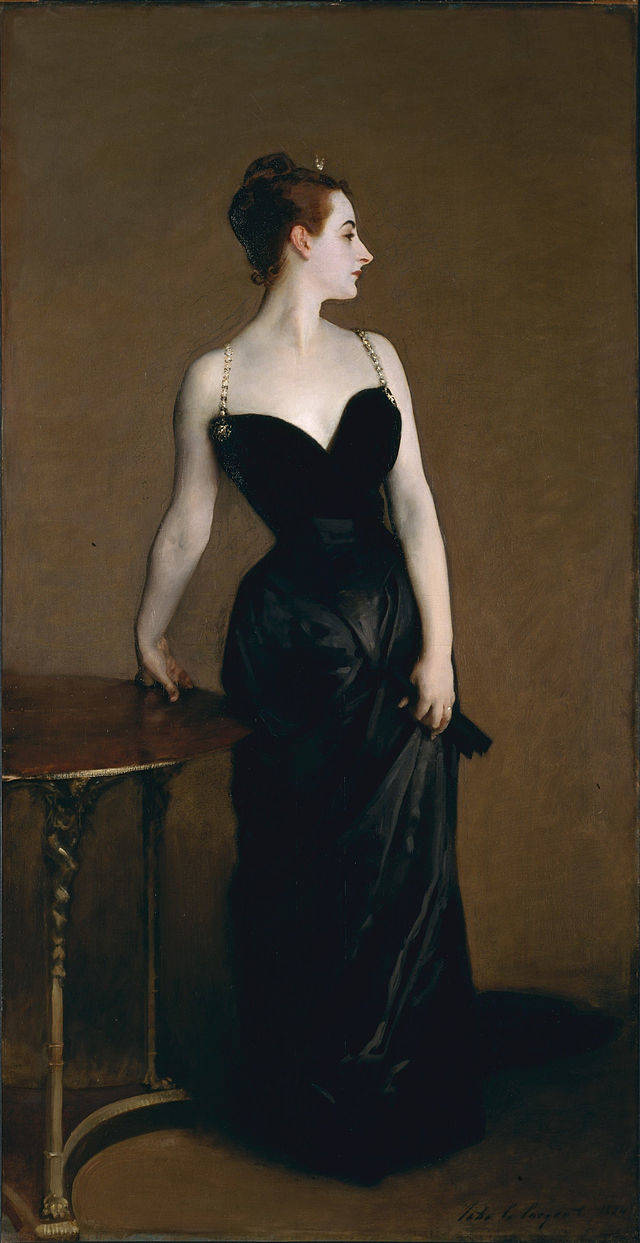 share
share
This painting shocked 19th century Paris society for a number of reasons. For one thing, the subject, Madame X, was rumored to be known for her numerous extramarital affairs. For another, the plunging neckline of what might be the first LBD. Originally, one of the straps was painted as slipping off the shoulder, but Sargent relented and painted it in place. People were also shocked by Madame’s pink ear, which they associated with…not an ear. And that might go to show you that sometimes you have to have a pretty dirty mind already to get offended by an ear.
Meat Joy, by Carolee Schneemann
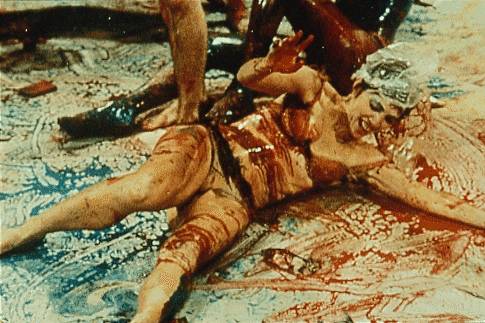 share
share
This performance piece debuted in 1964, involving a group of scantily clad men and women rolling around in a mixture of raw fish, chickens, sausages, and wet paint. We can only assume everyone involved got pink eye. The performance art of this period was known for being of this kind of bizarre nature, and Schneemann was known for her intensely physical performances that explore sexuality and the body.
Piss Christ, by Andres Serrano
 share
share
It’s exactly what you think it is. This piece is a plastic crucifix submerged in what Serrano claims is his own urine. Naturally, it caused some controversy and sparked debates over freedom of expression and separation of church and state. Serrano received death threats and hate mail for this piece, which did nothing but make the artist even more famous. Interestingly, a Catholic nun (who was also an art critic) defended the piece, saying it was a statement about what the modern world has done to Christian teachings. It still causes controversy to this day.
My Bed, Tracey Emin
 share
share
This installation piece was, the artist claimed, the bed where she had lain for several days in a deep depression over relationship issues. The public was shocked to see condoms, blood-stained underwear, trash, and liquor bottles. People found it to be obscene. One critic even derided the artist as “sluttish” based on this piece. Two other performance artists staged an impromptu pillow fight on it, and while the crowd applauded, they were hauled off by security guards.
Artist’s Sh*t, Piero Manzoni
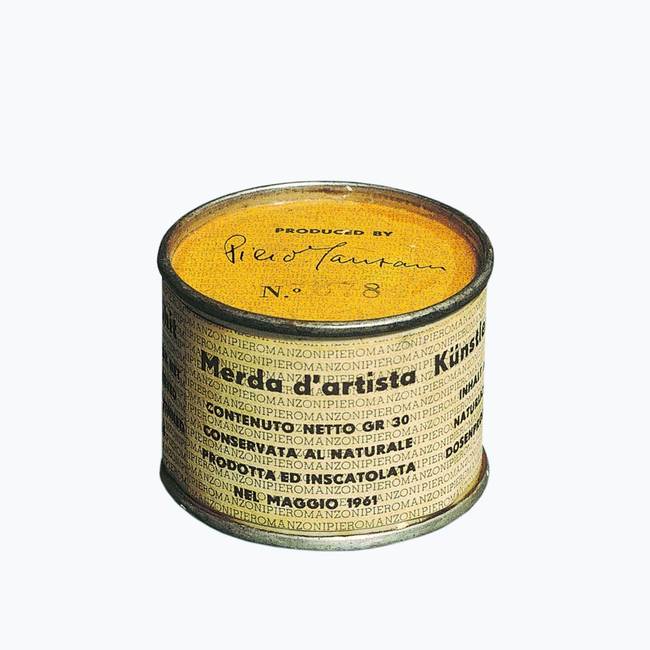 share
share
In 1961, Manzoni “produced” 90 small cans of what he claimed was his own poo. The 30-gram cans were priced based on the current value of gold. And yes, people bought them…for as much as upwards of $100,000. Of course, opening the cans would ruin them, so we’ll never know for sure if they are, in fact, full of 50-year-old poop. The piece is widely considered to be a satire of the art market and consumerism.
So what do we think of these? Is it fair to put the Sistine Chapel on a list with a literal can of poo, even if the Sistine Chapel contains a pretty blatant persona insult? Do these pieces get less shocking with time? Who’s to say what is and isn’t art?
 share
share
 share
share
 share
share
 share
share
 share
share
 share
share
 share
share
 share
share
 share
share
 share
share
 share
share



